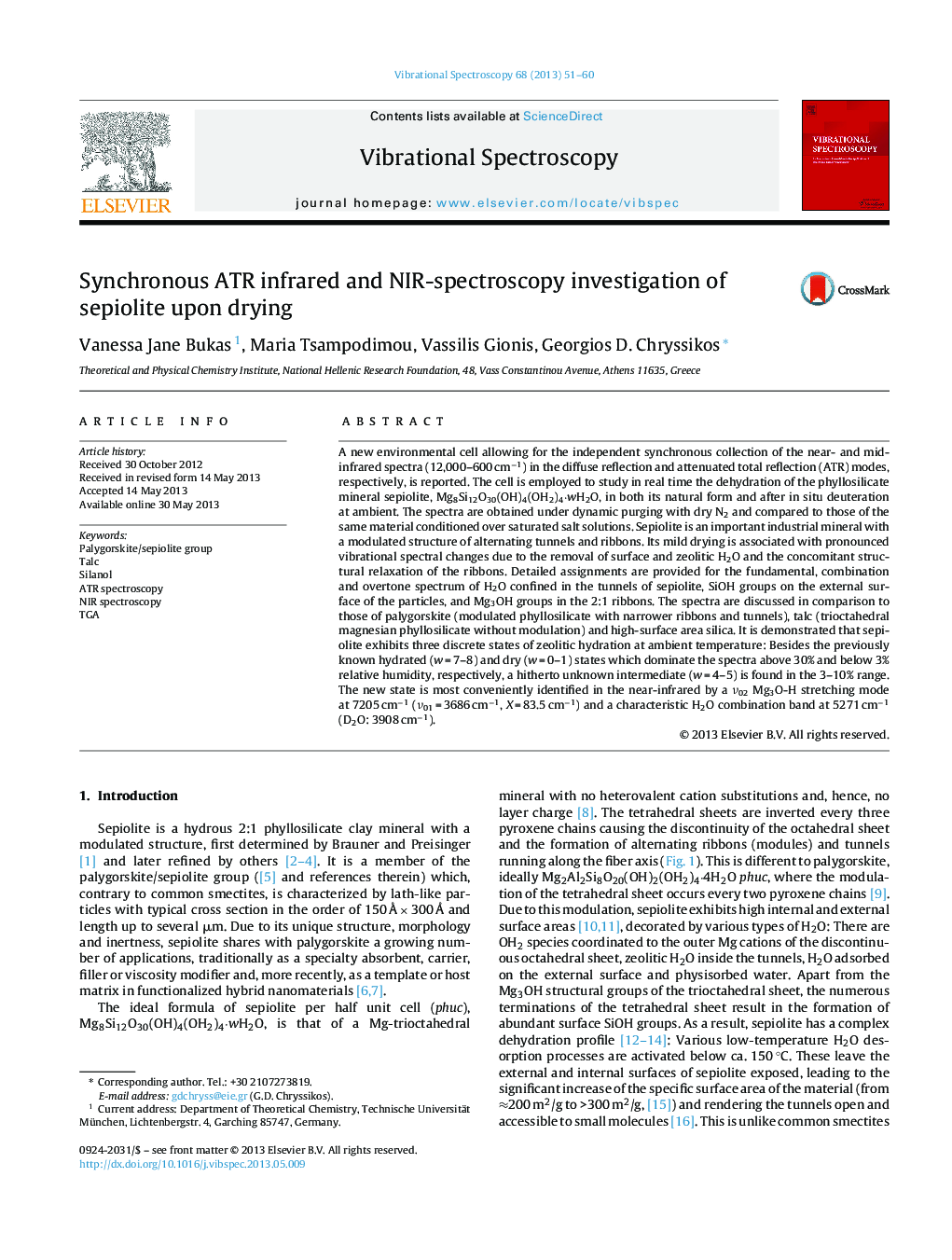| Article ID | Journal | Published Year | Pages | File Type |
|---|---|---|---|---|
| 1250163 | Vibrational Spectroscopy | 2013 | 10 Pages |
A new environmental cell allowing for the independent synchronous collection of the near- and mid-infrared spectra (12,000–600 cm−1) in the diffuse reflection and attenuated total reflection (ATR) modes, respectively, is reported. The cell is employed to study in real time the dehydration of the phyllosilicate mineral sepiolite, Mg8Si12O30(OH)4(OH2)4·wH2O, in both its natural form and after in situ deuteration at ambient. The spectra are obtained under dynamic purging with dry N2 and compared to those of the same material conditioned over saturated salt solutions. Sepiolite is an important industrial mineral with a modulated structure of alternating tunnels and ribbons. Its mild drying is associated with pronounced vibrational spectral changes due to the removal of surface and zeolitic H2O and the concomitant structural relaxation of the ribbons. Detailed assignments are provided for the fundamental, combination and overtone spectrum of H2O confined in the tunnels of sepiolite, SiOH groups on the external surface of the particles, and Mg3OH groups in the 2:1 ribbons. The spectra are discussed in comparison to those of palygorskite (modulated phyllosilicate with narrower ribbons and tunnels), talc (trioctahedral magnesian phyllosilicate without modulation) and high-surface area silica. It is demonstrated that sepiolite exhibits three discrete states of zeolitic hydration at ambient temperature: Besides the previously known hydrated (w = 7–8) and dry (w = 0–1) states which dominate the spectra above 30% and below 3% relative humidity, respectively, a hitherto unknown intermediate (w = 4–5) is found in the 3–10% range. The new state is most conveniently identified in the near-infrared by a ν02 Mg3O-H stretching mode at 7205 cm−1 (ν01 = 3686 cm−1, X = 83.5 cm−1) and a characteristic H2O combination band at 5271 cm−1 (D2O: 3908 cm−1).
Graphical abstractAn in situ study of the dehydration of the clay mineral sepiolite by synchronous real-time ATR and NIR spectroscopy is reported. Mild drying at ambient causes the step-wise distortions of the phyllosilicate ribbons which are probed by the Mg3OH vibrations (ν02 at 7220–7180 cm−1), whereas the removal of H2O adsorbed on the external surface of the particles accounts for the monotonic evolution of ν02 SiOH at ca. 7270 cm−1.Figure optionsDownload full-size imageDownload as PowerPoint slide
